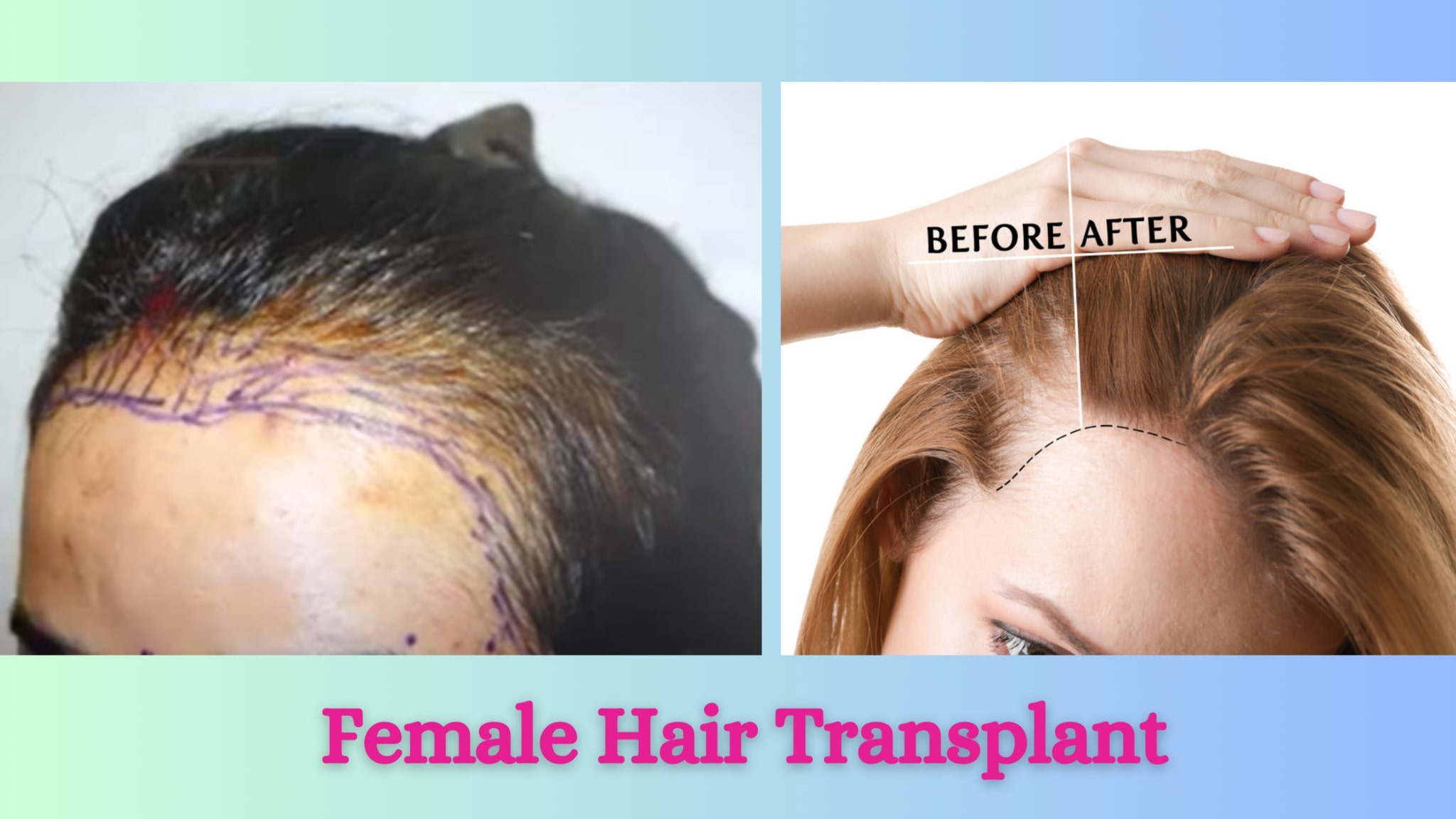For Females, Hair is the symbol of femininity and a reason for a positive self-image. It plays a significant role in their self-expression while uplifting their mood. The reason for such behaviors may be experimenting with different hairstyles, colors, or simply enjoying the natural healthy hair. This makes their relationship with hair deeply personal.
But sometimes, this source of empowerment takes a wrong turn and causes a negative psychological impact which affects their self-image.
The reasons behind female hair loss can be: hormonal changes, genetics, stress, nutritional deficiency, medication, hair styling treatment and menstrual cycle.
In some cases female hair loss reaches a point where the only solution left is to go for a Female Hair Transplant.
In this article we will talk about Female Hair Transplant, its indication and contraindication. Stay tuned for valuable insights into this transformative procedure.
What is Female Hair Transplant?
In Female Hair Transplant, the process of Hair Transplant is the same as male counterparts except the need to shave the full head. This involves extraction of graft from the donor site (back of the scalp), creating slits at the recipient site and then implantation of grafts into these slits. As baldness in females requires less number of grafts, sometimes the hair is implanted without even shaving the hair as well. The Process is known as Preview Long Hair Transplant.
There are generally two primary methods of Hair Transplant for Females{h3}
FUT – It is known as strip method or linear excision surgery. In this method, a strip of skin from the back of the head is taken out. Then individual Hair grafts are dissected microscopically and precisely implanted in the bald area. In women, the FUT method is preferable because there is no need for shaving in FUT. Only a small area from where the strip of the skin is harvested, needs to be shaved. Also, the transplanted hair gets hidden amongst the existing hair. So the hair transplant is unperceivable after FUT in females.
FUE – In this process, one-by-one grafts are extracted from the back of the scalp. So, there is a trimming required in FUE which looks odd in females. But, in some cases where only a small amount of grafts are needed just to hide baldness in a small area or cover a scar, FUE can be a suitable choice.
Now, a new version of FUE has been introduced, where hair grafts are extracted without shaving, with the help of instruments. Here, doctors’ expertise plays a major role, as this is a very time-consuming and tedious process. However, this technique is also a good choice for hair transplant in females.
Indications for Hair Transplant in Women
- In the case of an advanced grade of baldness like grade 2 or 3 where there is much hair thinning and a lot of baldness visible along the interior hairline.
- Hamilton’s type of baldness is where the frontotemporal recession is seen and the interior hairline is lower down when the width of the forehead is bigger.
- Some cases are of secondary scarring, like trauma-induced baldness that causes scars in that area. It makes hair transplant in females a viable option.
Critical Considerations in Female Hair Transplants
- Compared to males, Hair Transplant in Females is quite critical. This is because of the higher chances of shock loss (temporary loss of existing hair due to trauma after surgery). The hair shed due to shock loss will grow back but initially it creates anxiety amongst patients. Therefore, proper counseling is required prior to surgery.
Tip: One way to control shock hair loss is to start supplements and minoxidil 4-5 months prior to hair transplant. An early medical treatment and proper care after the hair transplant will also be beneficial.
- Another critical reason is expectations of females with Hair Transplant. It is important to understand that a 2000 graft hair transplant in females can only hide the bald area and give a delusion of more hair. But it cannot give a dense hair. So, there should always be realistic expectations and motivation. It is a good indication when a female is motivated and ready for medical treatment.
Situations where Female Hair Transplant is not recommended
- In case of diffuse thinning (diffused pattern baldness). This is due to limited donor area and risk of over harvesting.
- Primary Scarring Alopecia – In this case the roots of transplanted hair will also not be successful due to processing disease on the scalp
- Body dysmorphic disorder – In this situation, the disease that the patient is feeling is not that severe. Individuals with this kind of disorder frequently go for cosmetic surgery like rhinoplasty, breast augmentation, facial plastic surgery or abdominal plastic surgery.
They repeatedly consult plastic/cosmetic surgeons. Ultimately, they feel no satisfaction and seek other doctors. This disorder is known as Body Dysmorphic Disorder(BDD). Sometimes, this disorder is also linked to hair patients. Although, there is no considerable hair fall, still they feel they shall go for a hair transplant. In these cases, transplant should be avoided and proper counseling shall be given. They should be given only medical treatment which will definitely work for them.
Conclusion
Hair loss, arising from various factors, might lead to considering a Female Hair Transplant. Techniques like FUT, FUE, and Preview Long Hair Transplant offer options, but decisions should be thoughtful. Managing expectations and addressing potential shock loss are pivotal. While these procedures can be transformative, they aren’t universally suitable. Instances like diffuse thinning, primary scarring alopecia, and cases linked to Body Dysmorphic Disorder call for careful consideration or alternative treatments. Understanding the emotional impact of hair loss is essential for a comprehensive approach to Female Hair Transplantation.



